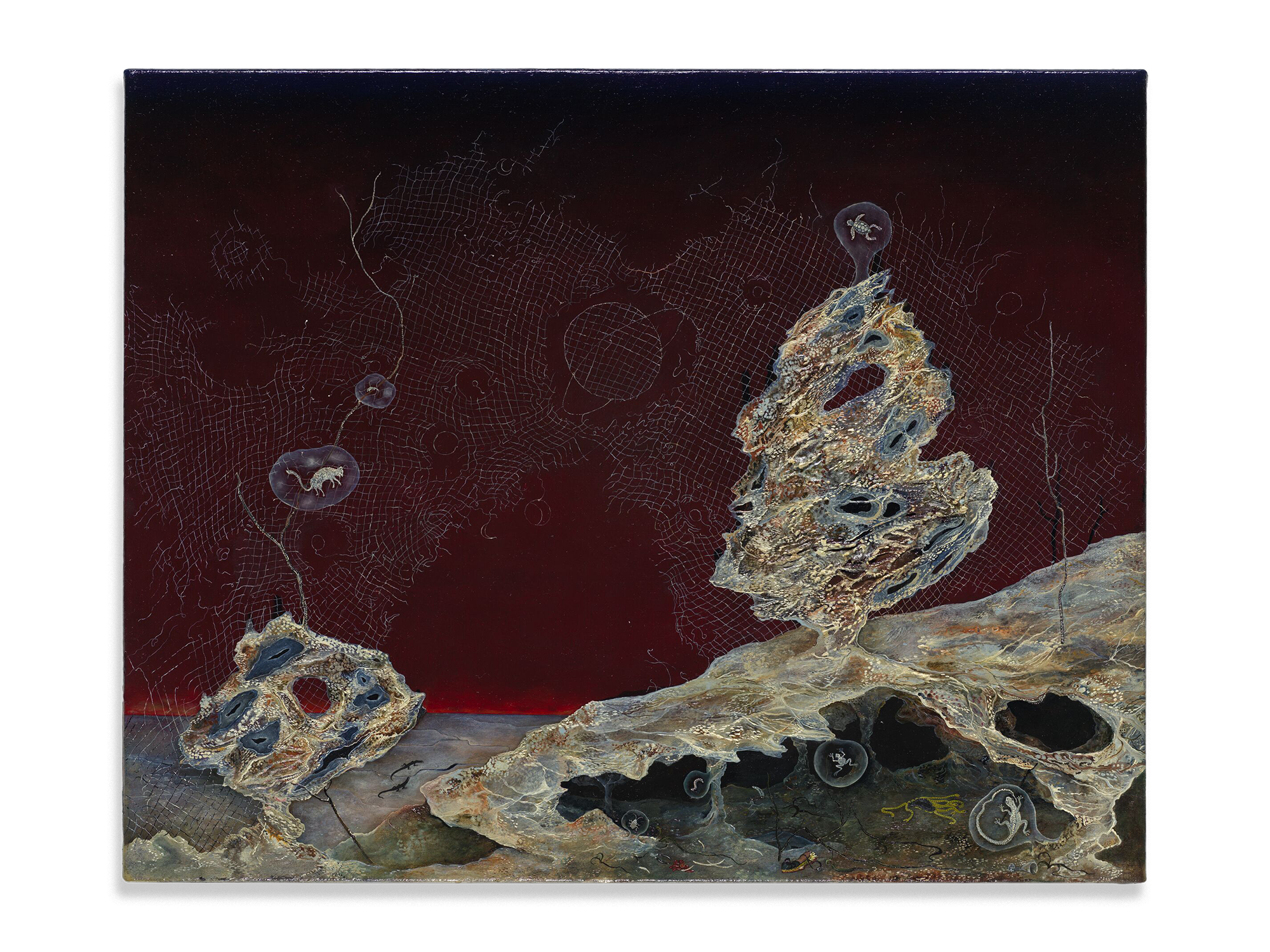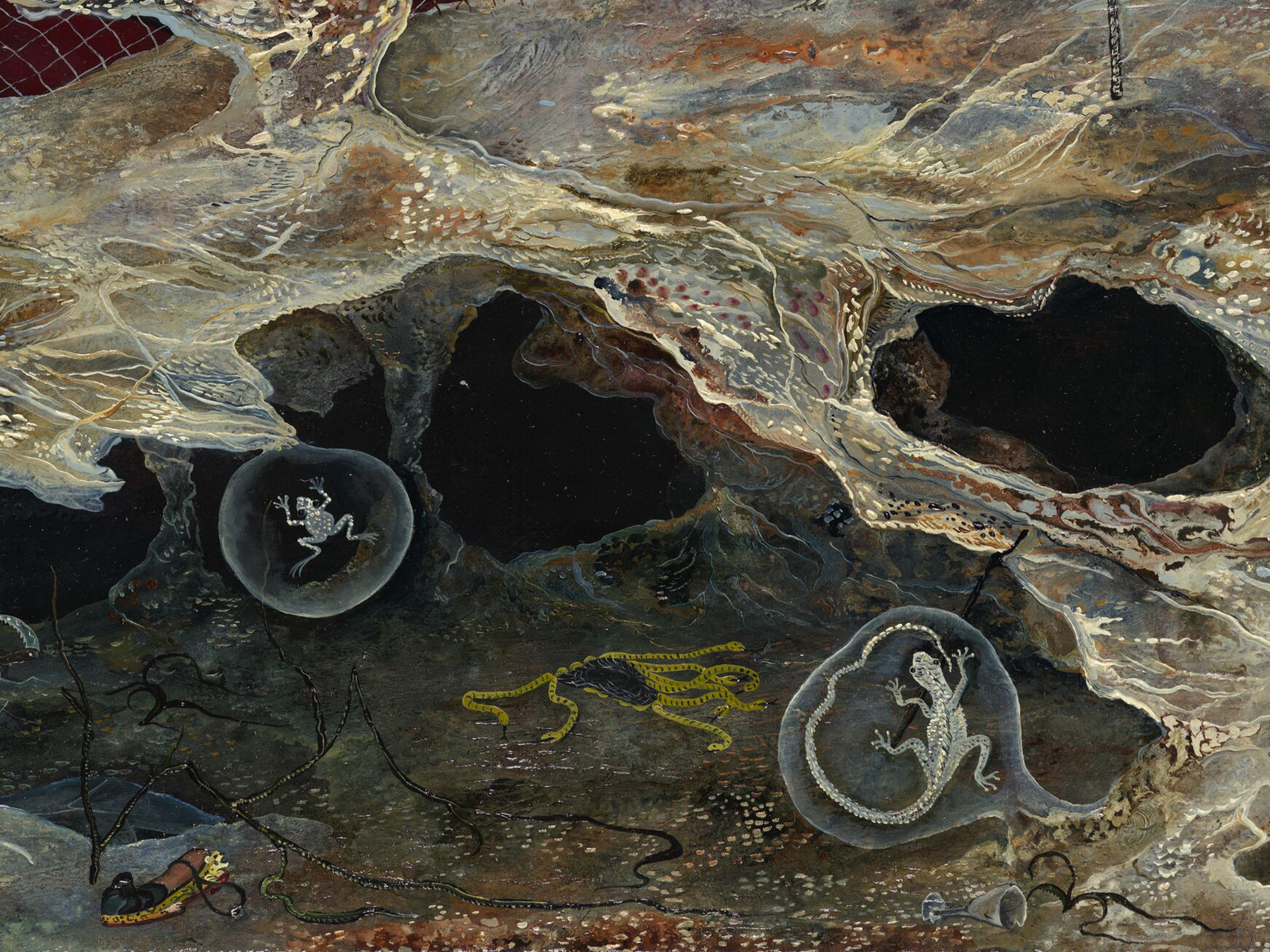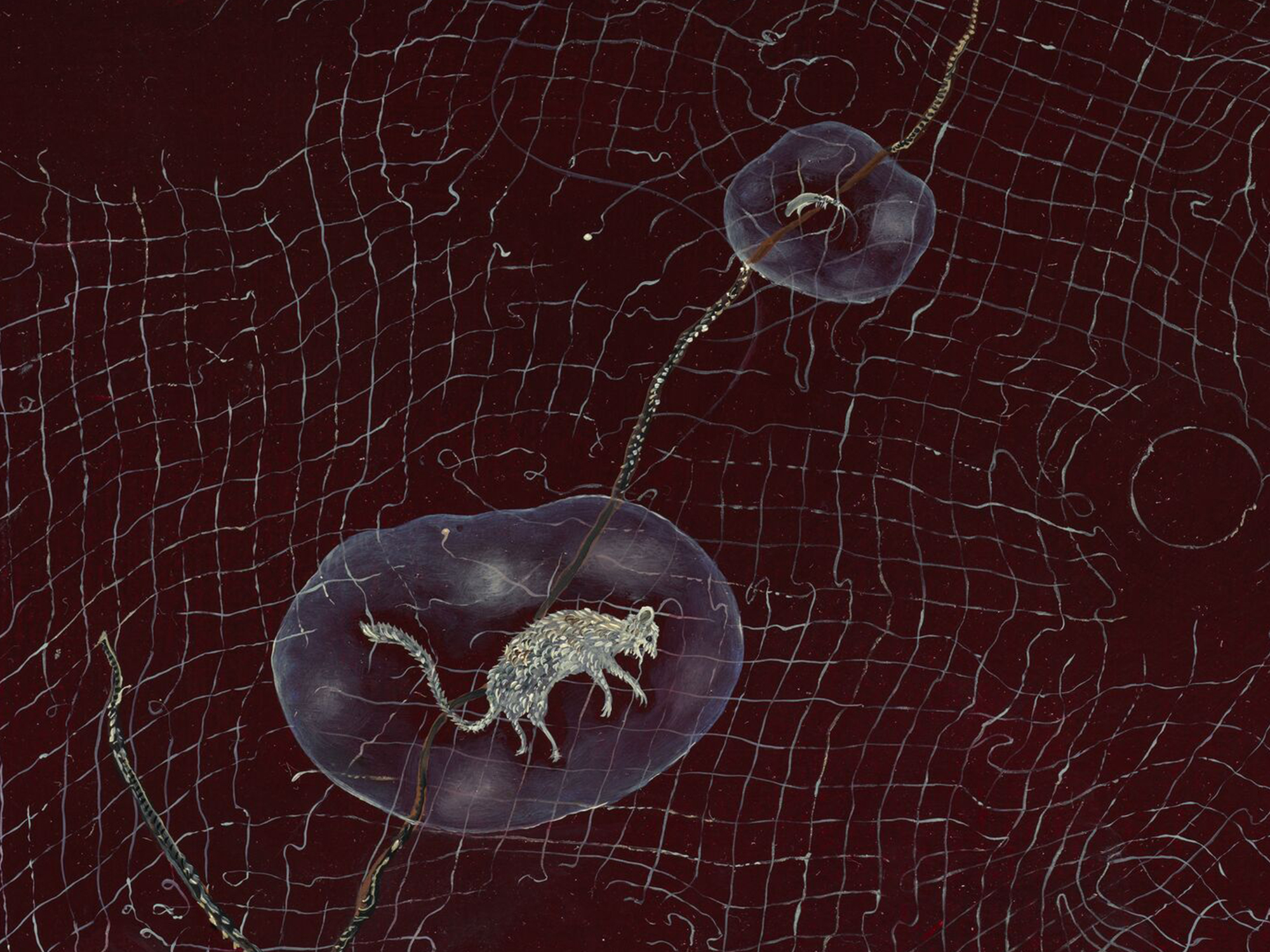Anj Smith
Untitled (Mayday)
Untitled (Mayday)
Viewing location: New York
2011 – 2020
Oil on linen
38.6 x 48.6 x 2.5 cm / 15 1/4 x 19 1/8 x 1 in
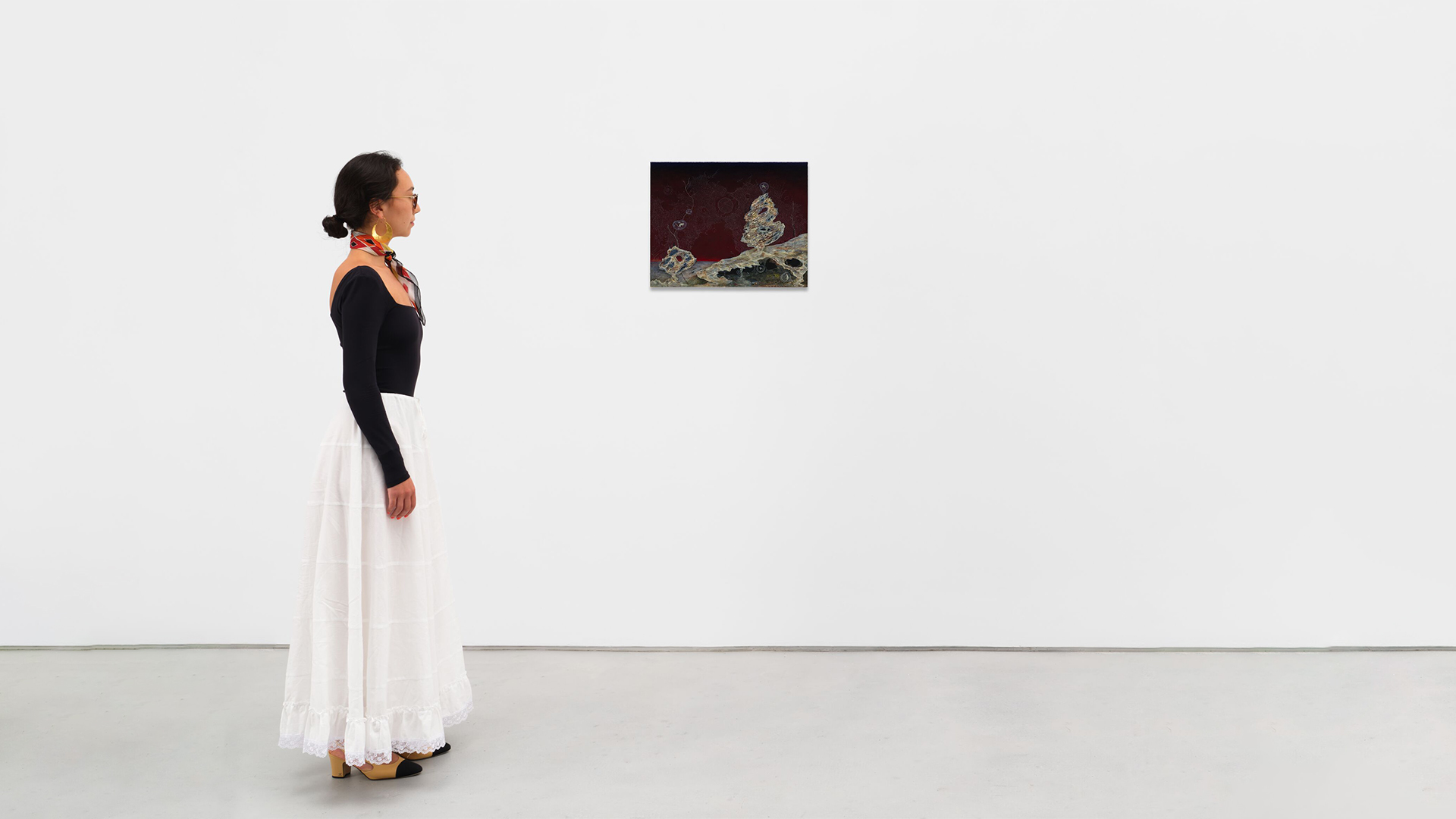
Anj Smith’s ‘Untitled (Mayday)’ (2011 – 2020) transports the viewer to a world that is otherworldly yet paradoxically also instantly recognizable. Smith painted the bright and deep reds that make up the horizon and sky first, building up the painting over an extended period towards the thick impasto rock formations that structure the foreground. It is not clear if we are looking at a world that is post-apocalyptic, set in the deepest reaches of the ocean, or on a planet far away. Among the jagged coral-like peaks, familiar life forms seem to float in bubbles. Suspended in these frozen orbs, the small creatures that can be identified are (among others) a darkling beetle, a wood frog, and a woolly bear caterpillar; all freeze-tolerant animals sharing the miraculous capacity to withdraw from biological function until thawing and embracing more conducive circumstances. A consummate example of Smith’s extraordinary visual lexicon and fastidious technique, ‘Untitled (Mayday)’ combines ostensibly disparate traditions of painting, subjects, and meanings.
Smith’s fascination with the overlooked comes to the fore in ‘Untitled (Mayday).’ There is something magical about the small creatures and objects that inhabit her meticulously constructed worlds, and they demand repeated, close inspection from the viewer. The beetle, frog, and caterpillar embody qualities that we would associate with the divine, but due to their small size and obscurity they often go unnoticed. Their wonder belies their dimensions, and here another parallel with Smith’s practice emerges. ‘Untitled (Mayday)’ is the painstaking product of a scrupulous almost decade-long process, a drawn-out unfolding of creation that gives rise to jewel-like astonishment. The viewer is prompted to stop in their tracks and behold small miracles.

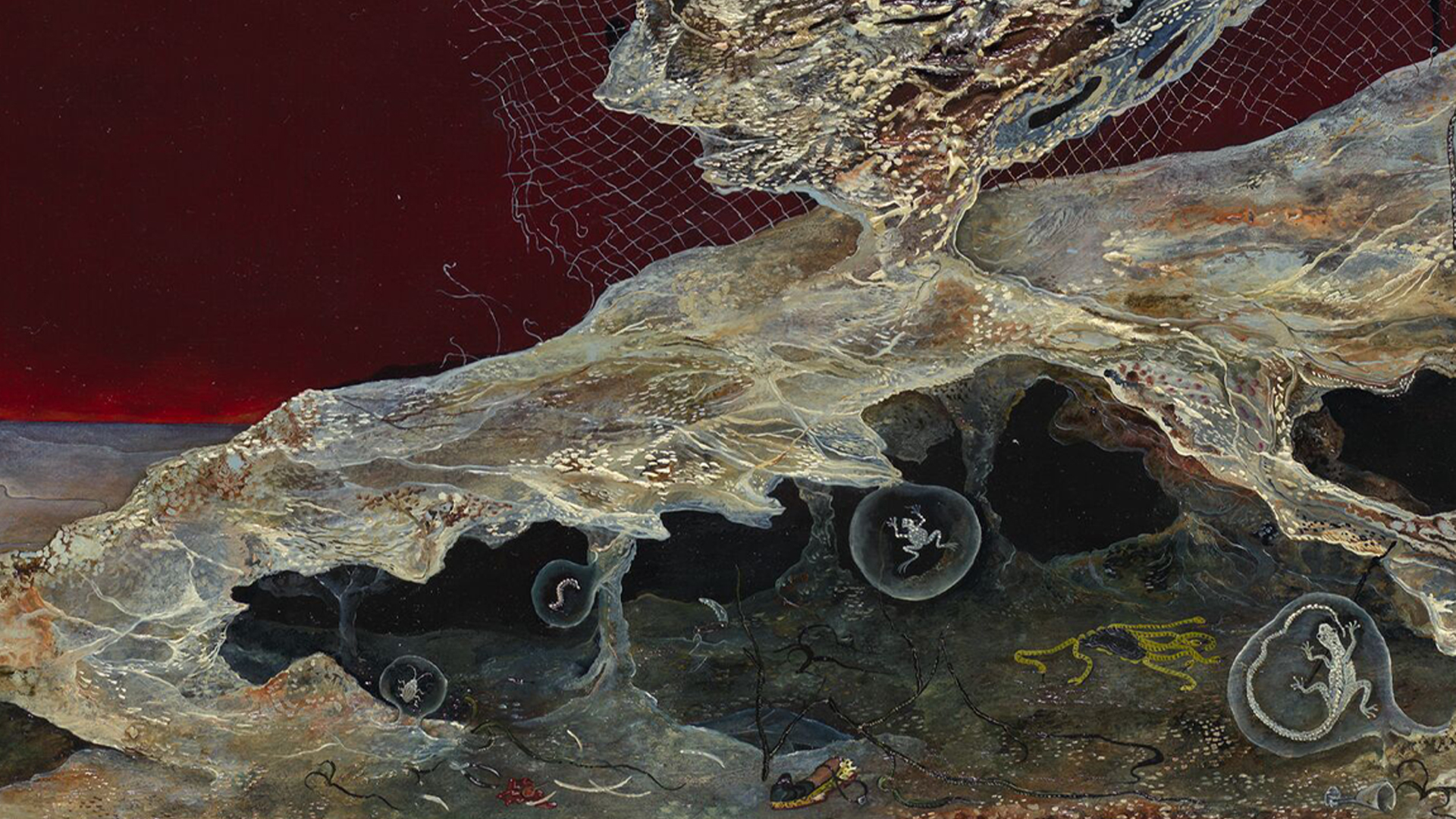
In the 2021 exhibition catalogue to the important travelling exhibition of Smith’s work at The New Art Gallery in Walsall and the Museo Stefano Bardini in Florence in which ‘Untitled (Mayday)’ was a highlight, National Gallery curator Joost Joustra compares the observations underlying Smith’s work to a rock pool: ‘rich collections of natural wonder that somehow feel both entirely accessible and simultaneously completely otherworldly. Far from quotidian, the rock pooler is instantly transported to a world from which the casual beach-goer is entirely excluded.’ [1] This is painting away from the soundbites, the flashing images, and the relentless pace of the world we inhabit. It is a celebration of close looking, to understanding the world through prolonged observation and the amazement that results from this.
Yet, there is more to ‘Untitled (Mayday).’ Smith is an artist who always considers humanity’s impact on our planet. In 2011, she started collecting reports of populist movements gaining traction in Europe and from within this anxiety a catalyst for ‘Untitled (Mayday)’ emerged. The work was completed during lockdown in 2020, for many a culmination of an anxiety that has gripped the world in the preceding decade. Tellingly, ‘Mayday’ is the international distress signal used by ships and aircraft. In the foreground of the painting, a flick knife and a discarded, broken Martini glass hint at human presence or altercation, or perhaps something that is no longer there. ‘Untitled (Mayday)’ presents what renowned art historian Jo Applin describes in relation to Smith’s oeuvre as worlds ‘deeply queer in their resistance to definition and outright refusal of interpretative certainty, turning what we know and think on our head.’ [2] ‘Untitled (Mayday)’ transport us to a realm past and away from the destruction and anxieties of the Anthropocene to a world where small wonder is allowed to thrive and to be noticed.
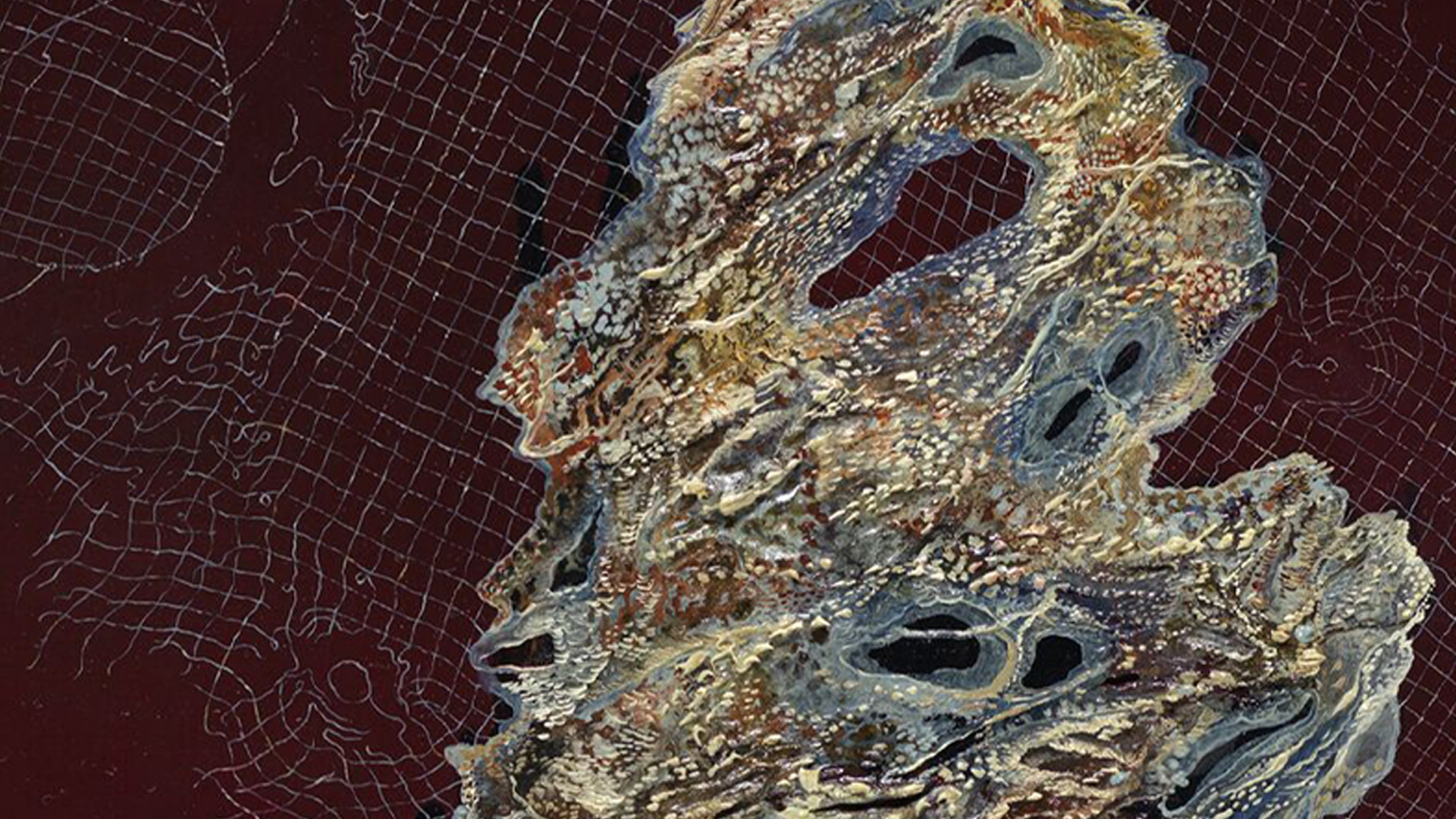
About the artist
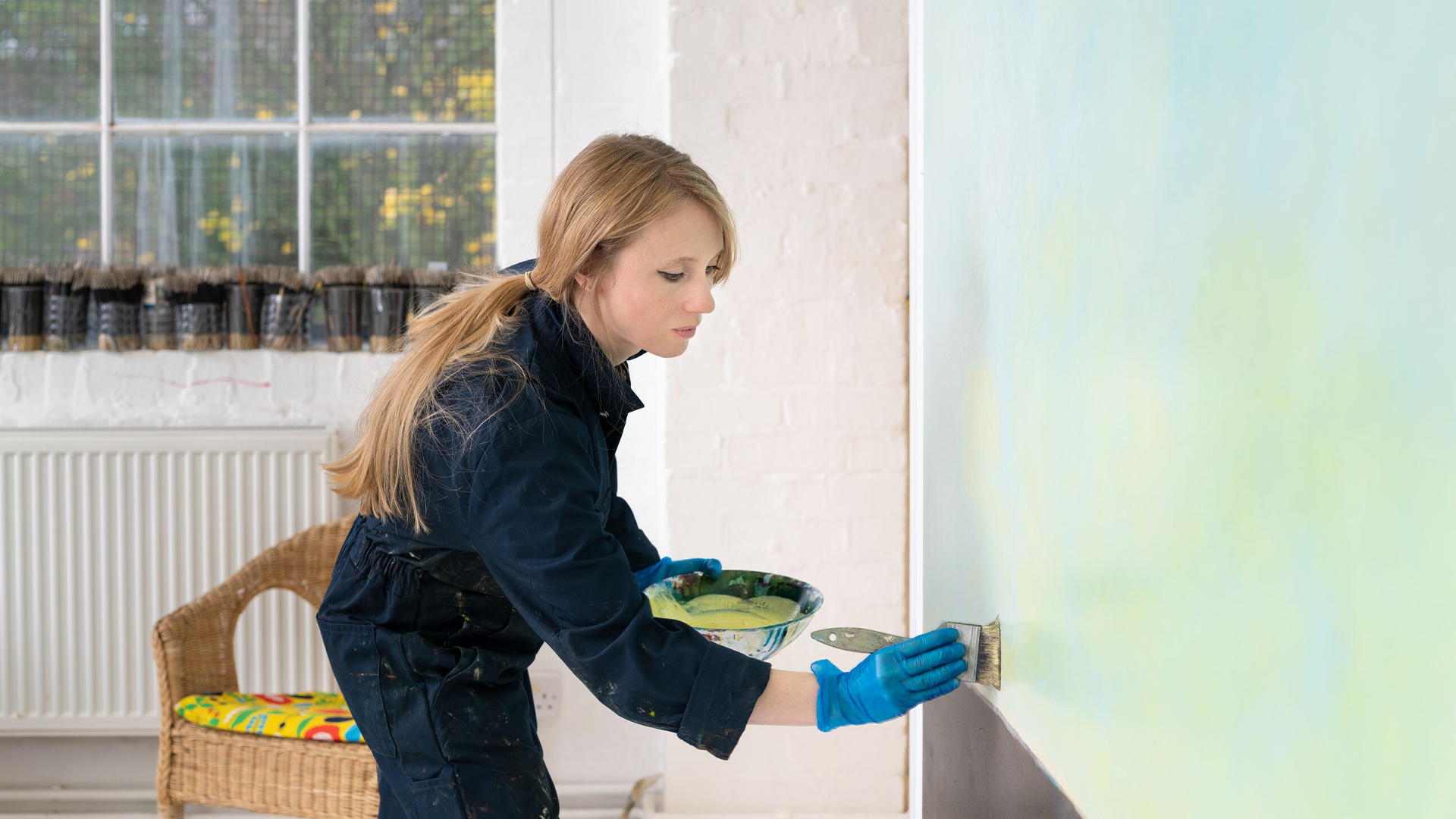 Anj Smith’s intricately rendered paintings explore issues of identity, eroticism, mortality, and anxiety. Within her remarkably detailed works, wildly feral landscapes, ambiguous figures, textiles, and rare and exotic flora and fauna are used, to investigate the possibility of a contemporary sublime. Drawing upon sources as disparate as the works of Lucas Cranach, and the couture of Madam Grès (as examples), Smith weaves archaic traditions and contemporary signs together into a personal cosmology. In Smith’s luscious visual language she embraces the instability of meaning, exploring shifting boundaries, disintegration and the liminal. Her paintings are rich in detail, color and texture, collapsing strict definitions of portraiture, landscape and still-life whilst allowing elements of each to coexist.
Anj Smith’s intricately rendered paintings explore issues of identity, eroticism, mortality, and anxiety. Within her remarkably detailed works, wildly feral landscapes, ambiguous figures, textiles, and rare and exotic flora and fauna are used, to investigate the possibility of a contemporary sublime. Drawing upon sources as disparate as the works of Lucas Cranach, and the couture of Madam Grès (as examples), Smith weaves archaic traditions and contemporary signs together into a personal cosmology. In Smith’s luscious visual language she embraces the instability of meaning, exploring shifting boundaries, disintegration and the liminal. Her paintings are rich in detail, color and texture, collapsing strict definitions of portraiture, landscape and still-life whilst allowing elements of each to coexist.

[1] Joost Joustra, Zoé Whitley, Deborah Robinson, ‘Anj Smith. A Willow Grows Aslant the Brook,’ Walsall/UK: New Art Gallery, 2021, p. 20.
[2] Jo Applin in Sarianne Soikkonen (ed.), ‘Anj Smith. Sea Lily, Feather Star,’ Tampere/FI: Sara Hildén Art Museum, 2018, p. 12.
Anj Smith, 2020 © Anj Smith. Photo: Damian Griffiths
All artwork images © Anj Smith



